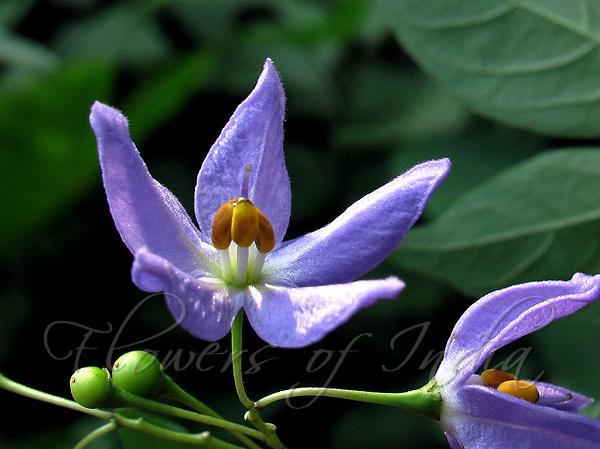|
| Brazilian Nightshade |
|

|

| File size | 233097 |
| Original date | 2/6/09 9:04 AM |
| Resolution | 1024 x 768 |
| Flash | Flash did not fire, auto |
| Focal length | |
| Exposure time | 1/250s |
| Aperture | 2.8 |
| Focus Distance | |
| Metering Mode | $meteringMode |
| Camera make | Panasonic |
| Camera model | NV-GS400 |
| Sensor type |
|
|
|
|
Photo: |
Botanical name: Solanum seaforthianum Family: Solanaceae (Potato family)
Synonyms: Solanum venustum, Solanum prunifolium, Solanum cyrrhosum
Synonyms: Solanum venustum, Solanum prunifolium, Solanum cyrrhosum
Brazilian Nightshade is a flowering evergreen
sprawling shurb or climber native to tropical South America. It is
characterized by clusters of four to seven leaves and can climb to a
height of 20 ft given enough room. Leaves are mostly pinnately cut into
almost leaflets. Leaves are ovate in outline, 4-10 cm long, 3-6 cm
wide, deeply lobed, both surfaces green and smooth except for hairs on
margins and veins on lower surface. Leaf-stalk is 2-4 cm long. The
plant blooms in the mid to late summer with clusters of star-shaped
purple inflorescence followed by scarlet marble-sized berries.
Inflorescences are 10-50-flowered, carried on 1-6 cm long stalks. The
rachis is up to 10 cm long, flower-stalks 1-1.5 cm long. Sepal tube is
1.5-2.5 mm long, sepals about 1 mm long. Flowers are deeply incised, 2-3 cm
across, mauve-blue. The plant is highly heat resistant, but cannot
tolerate frost conditions. The plant contains modest amounts of various
tropane alkaloids such as atropine, scopolamine and hyoscyamine and
should be considered mildly toxic and inedible. The species has become
widely naturalised outside its native range and is an invasive species
in Australia, Africa, Indochina, the Pacific Islands and India, choking
native vegetation and poisoning livestock.
| Identification credit: Deepti Chauhan | Photographed at Palakkad distt., Kerala & Nashik, Maharashtra. |
• Is this flower misidentified? If yes,